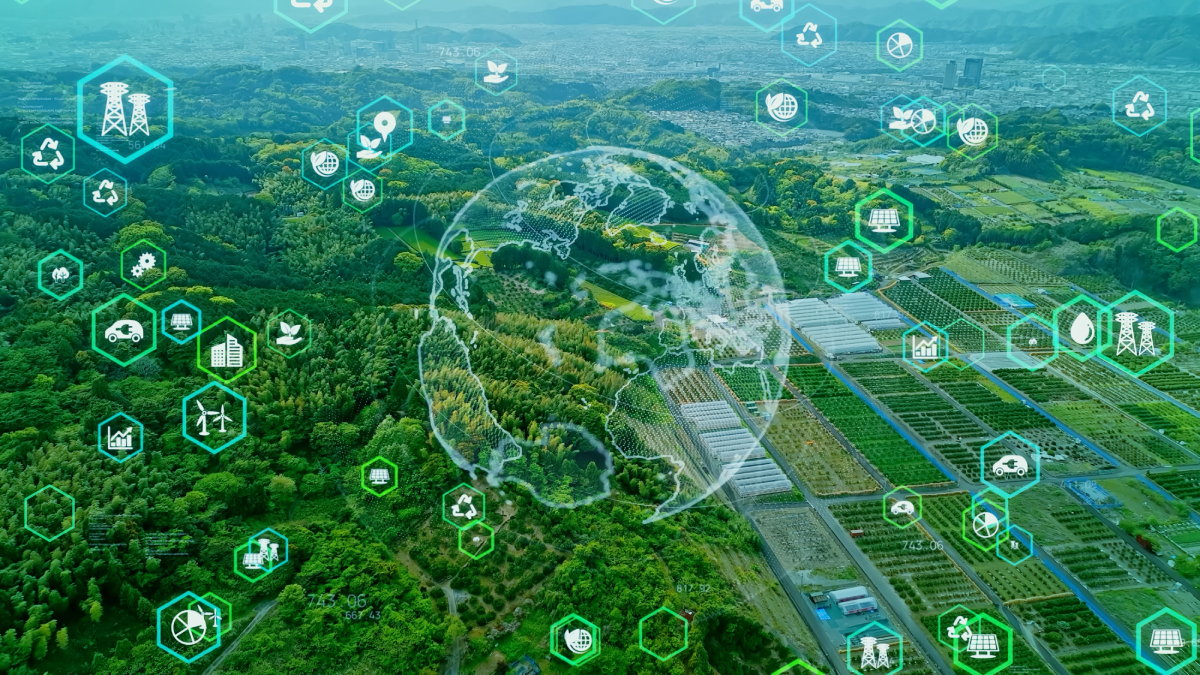The role of the data centre is rapidly evolving. With our reliance on digital services growing, and the prospect of a future virtual world, this demand is not expected to slow down.
There’s already plenty of attention on the role that data centres will play. It’s no surprise then, that providers are recognising the wealth of opportunities, with cloud and colocation being forecasted by Omdia to grow at a five-year CAGR of 16.6% and 8.3% respectively.
At the same time, data centre providers are embracing strict policies to drastically reduce their carbon emissions in order to help achieve sustainability targets.
Data centre sustainability
Major data centre operators have signed The Climate Neutral Data Centre Pact, and many more are moving in the same direction; the industry has committed to climate neutrality by 2030, ensuring that sustainability is now a key element of any business process.
With this in mind, chilled-water systems are a viable way for data centre providers to not only support their growth cost-effectively and with minimal disruption, but also reduce their carbon footprint and help meet sustainability objectives. The reduction of emissions goes through two fundamental aspects: the reduction of direct emissions and the reduction of indirect emissions.
Reduction of the direct emissions (refrigerant GWP)
Global warming potential (GWP) describes the relative impact of a greenhouse gas, and the timespan that it remains active in the atmosphere, compared to a base of CO2. The lower this metric, the lower the atmospheric impact.
The traditional refrigerants can now be replaced by modern HFO (hydrofluoro-olefin) refrigerants, which have a lower GWP; it is expected that this will prevent the emissions of up to 105 million tons of equivalent CO2 by 2040. However, most of these new refrigerants are classified by ASHRAE (American Society of Heating, Refrigerating and Air-Conditioning Engineers) as mildly flammable therefore requiring a new design for the cooling system, potentially impacting the broader data centre design.
Chilled-water systems offer an excellent solution as the refrigerant is contained within chiller units and, in most applications, these are installed outside of the data centre, thus simplifying the use of flammable fluids. Chilled-water systems are one of the first cooling technologies to apply low GWP refrigerants in data centre applications and therefore are an example of a valid alternative for reducing direct environmental impacts.
Reduction of the indirect emissions (cutting energy consumption)
Reducing carbon footprint also means cutting the electricity consumed by a data centre during its operation. This is where chilled-water systems can play a big role. In recent years, they have applied a range of cooling system efficiency improvements that allow a reduction of electricity usage.
For example, in a chilled water system, the chiller compressor is the greatest consumer of electricity, and the warmer the external climate, the greater the electricity demand of the compressor.
Recently, there has been an increased use of inverter-driven compressors which help to achieve higher efficiency levels, especially at partial loads. Chillers equipped with inverter driven screw compressors, or oil-free centrifugal compressors, are now available to drastically cut down electricity consumption compared to the previous technology available.
Over the past few years, ASHRAE has increased the recommended operating temperature of data centre equipment up to 27OC. This has allowed subsequent increases to the water temperatures within chilled-water systems and has enabled an extended use of freecooling chillers, even in countries where freecooling was not previously feasible. Freecooling technology has an important advantage as it allows for the cooling of the system without activation of the compressor.
The adiabatic technology can additionally improve the efficiency of a chilled-water system. In these systems, the ambient air is cooled down by passing through wet pads. The air is then delivered at a lower temperature, achieving a higher freecooling capacity of the chiller and a more efficient operation of the compressor. The core of this solution is the onboard controller of the unit: it enables the use of water whenever strictly needed, according either to redundancy, efficiency or cooling demand needs. The controller has the main responsibility in preventing water from being wasted, improving the WUE (water usage effectiveness) of the data centre. The application of water is always a matter of balancing different aspects and constraints.
Further improvements to data centre efficiency can be made through the optimisation of chilled-water systems controls. Chilled plant manager technology can coordinate the operation of all the units and main components of the chilled-water systems. It allows an integration and coordination of the working mode between units and the main components, enabling improved efficiencies and performance at partial loads or, in the unlikely event of failure, finding the best way to react and grant cooling continuity to the system.
Combining all the technology optimisations, chilled water systems can significantly reduce the direct and indirect emissions. The following table summarises an example of the results in London, where the system never fully works in direct expansion mode, thus granting excellent system efficiency and reducing costs. 
Scaling with confidence
An example of how chilled-water systems can achieve these benefits is in the case of Green Mountain, a Norwegian hydro-powered data centre where the thermal management system plays a big role. Green Mountain gained five megawatts of additional cooling capacity after the installation of Vertiv’s chilled water units, demonstrating how these systems, as part of a broader strategy, can facilitate carbon neutral data centre configurations.
Many hyperscale and colocation providers are now embracing the opportunity chilled-water systems present, not only from a cost and speed of deployment perspective, but with sustainability front and centre. This needs to continue as we move into the next phase of the race for expanding capacity and improving the data centre carbon footprint. With such rapid expansion and increasing pressure to achieve net-zero, data centre providers must rely on new technologies to meet the requirements of both today and tomorrow.

